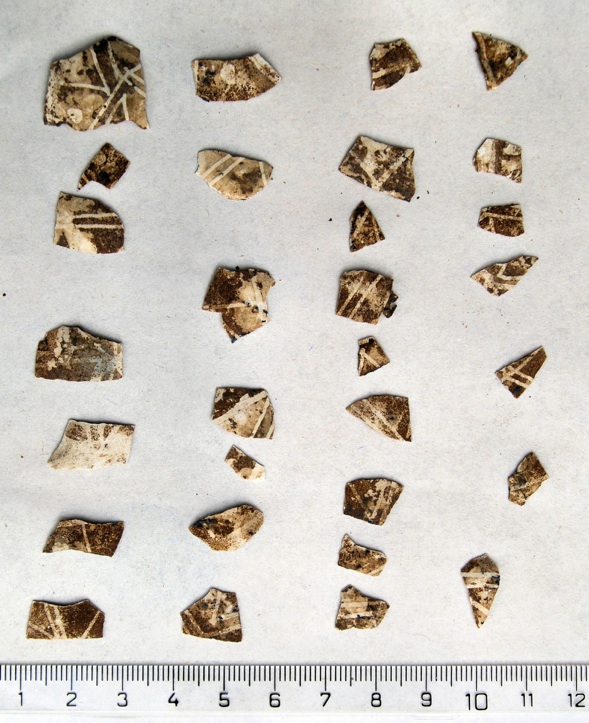Baturyn Pysanka
Батуринська Писанка
Baturyn Pysanka
Батуринська Писанка

Until quite recently, the oldest examples of true Ukrainian pysanky dated only back to perhaps the end of the 18th century1. There are numerous ceramic representations of pysanky dating back to the Kyivan Rus era, and cultic decorated ceramic eggs dating back to the Trypillian era, but real eggs2 are fragile and few survive more than a century or so.
In 2008, during excavations at Baturyn, the oldest existing chicken egg pysanka was discovered, and this date was pushed back. Per Ukrinform:
Chernihiv: Oldest Ukrainian pysanka found by archaeologists in Baturyn
This unique find was made by archaeologists currently working in Baturyn. This is a real chicken egg-pysanka, that by some miracle was preserved in layers of late XVII century Baturyn.
Since the most ancient pysanky previously found on the territory of Ukraine have dated only to the end of 18th or early 19th century, the Baturyn egg should be considered the oldest, according to Volodymyr Kovalenko, the head of the archaeological expedition (Department of History and Archeology of Ukraine, Shevchenko State Pedagogical University of Chernihiv).
He explained that Easter eggs, a common attribute of Christian worship, are often found by archaeologists. Easter eggs from the period of Kyivan Rus, for example, are made of stone, clay or bone, and are small versions of those made from real eggs. The Baturyn egg is a completely natural blown-out eggshell, colored with a gray-blue dye, and decorated with geometric ornaments. And even though the egg is crushed, it is archaeologically complete and can be restored. To do this, according to Viktor Kovalenko, they will make an artificial egg out of paraffin or synthetic resins.
Currently, the remains of this earliest known pysanka are being restored at the State Historical and Cultural Reserve "The Hetman Capital".
Natalia Potapchuk, Ukrinform
Baturyn was the capital of the Kozak Hetmanate, an autonomous Kozak republic in Left-bank Ukraine, from 1669–1708 (and again from 1750-1764, after being rebuilt). In 1708, the Kozaks were caught in the midst of the Great Northern War, in which Hetman Mazepa supported Sweden and its war with the Russian Empire, and fought for Ukraine’s independence. On Nov. 13, 1708 Baturyn was sacked and razed by the Russian army, and all of its inhabitants were slaughtered. Historian Serhiy Pavlenko estimates that 6-7.5 thousand civilians and 5-6.5 thousand military personnel were murdered. The population of the city in 1708 had been 20,000.
SInce this pysanka was found in the ruins of Baturyn, it must date to 1708, the year Baturyn was destroyed, or earlier.
It will be interesting to see what this pysanka looked like, once it has been put back together.
__________
1.The oldest examples I have ever see are from the late 1800s, in the Pysanka Museum in Kolomyia. I can only assume that these older pysanky are found in other museums in Ukraine.
2.I am referring here to chicken, duck and goose eggs, the sorts traditionally used to make pysanky. Some birds produce quite thick, strong shells, like those of the ostrich, which can last for many centuries. Examples of decorated ostrich eggs from ancient Egypt have been found, including examples from the Predynastic Era (3800-3000 BCE).
Back to History home page
Back to MAIN Pysanka home page.
Back to Pysanka Index.
Search my site with Google
The Second Oldest Known Ukrainian Pysanka
